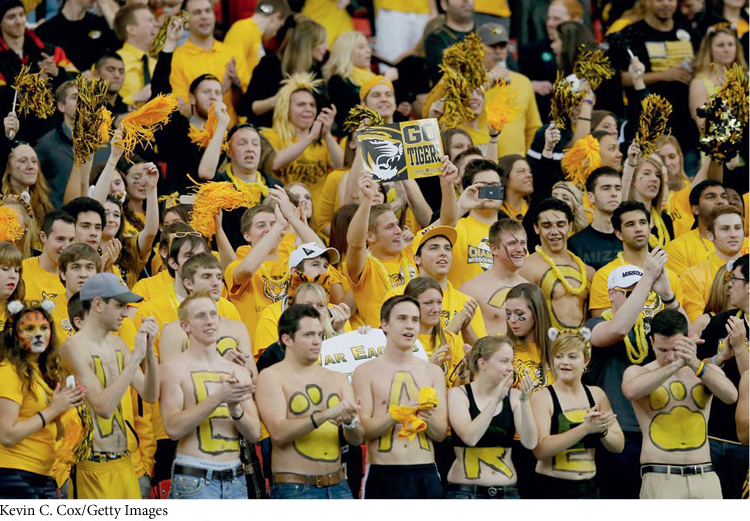Using Emotions to Sustain an Argument
Using Emotions to Sustain an Argument
You can also use emotional appeals to make logical claims stronger or more memorable. That is the way that photographs and other images add power to arguments. In a TV attack ad, the scowling cell phone video of a disheveled political opponent may do as much damage as the insinuation that he bought his home on the cheap from a financier convicted of fraud. In contrast, a human face smiling or showing honest emotion can sell just about any product — that’s why indicted political figures now routinely smile for their mug shots. Using emotion is tricky, however. Lay on too much feeling — especially sentiments like outrage, pity, or shame, which make people uncomfortable — and you may offend the very audiences you hoped to convince.
Still, strong emotions can add energy to a passage or an entire argument, as they do when Walter Russell Mead, editor-at-large of the American Interest, argues about what really motivates Americans to donate lavishly to many colleges and universities. As you read the following excerpt, notice how the author paints vivid pictures of people at college sporting events, describes the emotions at those games, and then argues what schools really need to do to win contributions:
But if you want to understand why so many generations of Americans have sent so much dough back to the campuses where they wasted some of the happiest years of their lives, watch the intensity of the tens of thousands of fans who attend these events. Look at the shirtless boys with faces and torsos painted in the school colors; look at the cheerleaders on the fields, the “waves” surging through the stands.
35
American universities, those temples of reason (at their best), are tribes. The kids bond to each other and to their schools in the heat of the intense emotions that these contests generate. Those shirtless kids covered in paint, shivering in the November weather as they cheer their team on, will be prosperous, middle-aged alumni one day — and when they are, they will still be stirred by the memory of the emotions and the loyalty that brought them out to the field.
If you want your alumni to give, you first have to make them fall in love with your school. This is not about having better chemistry programs or more faculty with higher name recognition than the school up the road. It is not about scoring higher on world indices of university quality. It is about competition, drama, intensity, about hope and fear, collective celebrations or collective disasters, seared into young and impressionable hearts where they will never be forgotten — and where they will be annually renewed as each sport in its season produces new highs and lows, new hopes and fears. Alumni watching their schools’ games on TV, or celebrating or mourning their schools’ results each week with friends, family and colleagues, are renewing their ties with their alma maters affirming that being an “Aggie” or a “Tar Heel” is an identity, not a line on the resume.
This is why most of them give. It is irrational and tribal love. It is intense emotion, not a vague sense of obligation or philanthropy. They want to beat State.
— Walter Russell Mead and The American Interest staff, “It All Begins with Football”
Mead’s claim, emotional in itself, may not be exactly what college and university administrators and faculty want to hear. But in using language this evocative, he makes his argument memorable, hoping perhaps to make general readers admit how they have felt and acted themselves.

36
It’s difficult to gauge how much emotion will work in a given argument. Some issues — such as racism, immigration, abortion, and gun control — provoke strong feelings and, as a result, are often argued on emotional terms. But even issues that seem deadly dull — such as reform of federal student loan programs — can be argued passionately when proposed changes in these programs are set in human terms: reduce support for college loans and Kai, Riley, and Jayden end up in dead-end, low-paying jobs; don’t reform the program and we’re looking at another Wall Street–sized loan bailout and subsequent recession. Both alternatives might scare people into paying enough attention to take political action.